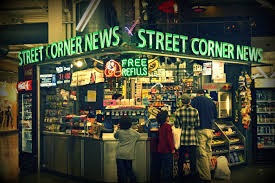
photo from pbs.org
The final show, the end of the series was last night. The most popular PBS show of all time, Downton Abbey, ended its Masterpiece Theatre run. It was a beautiful, touching show, filled with what we loved best and expected from the show. As I look back on six seasons, I realize there were some great life lessons from this period piece, some of which even has to do with marketing…
It’s All in the Writing: The core of the show’s allure was its nuanced writing. Without using dirty words or silliness, the writing illuminated the changing structure of English aristocracy, the service class, a more global world, the nascent bubblings of feminism, all within the structure of a family. Yet, far from being stuffy, there was pathos, abundant humor, suspense and surprise. As a writer for multiple clients, the importance of writing struck a happy chord, like an A-major!
The Key to Success: Maggie Smith: From her turn as the witty, sometimes stuffy, always wise Dowager Countess to Minerva Mcconagall in the Harry Potter series to her turns in the Exotic Marigold Hotel and now, The Lady in the Van, every good movie needs Maggie Smith. She’s the epitome of self-deprecating, self-aware, witty, but not mean humor and understanding.
But the Costumes were Lovely: The clothes were to die for, and PBS appeared to have an unlimited budget for style. Beautiful surroundings filled with well-dressed people: they still sell in New York’s fashion week, they still fill the magazines, and they embellish an already good product.
Real Estate Porn is Awfully Stimulating: Beautiful vistas of old estates, far-flung castles and quiet village scenery; they were like an additional character of the show, drawing us to make plans to visit the real Highclere Castle or even the town of York (is there actually anything to do there?)
Relationships Make the Show: Ultimately, we stayed tuned in to see how each character would handle his or her relationships with others, the romantic, the familial, the work relationships. Relationships are essentially what move us. It’s true in marketing: we have to form relationships with our clients, our patients, our customers. Nourishing that is the best marketing.
Leave Them Wanting More: There are many shows with far greater longevity. But Downton ended as its writing was winding down. When the closing music played and the snow fell down on the abbey, we wanted more and not less. It’s the same way with marketing; often, less is more. Understated often trumps overblown. Humility is more well received than braggadocio.








